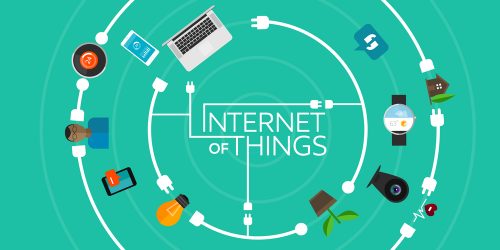Revolutionizing insurance: The Internet of Things (IoT) era
The internet has changed how we live, work, and connect with others. Now, with the proliferation of connected devices, we are entering a new era—the Internet of Things (IoT).
The Internet of Things encompasses a vast array of interconnected devices imbued with sensors and sophisticated software, empowering them to seamlessly gather, analyze, and exchange data.
This intricate web of connectivity enables devices to communicate with each other creating a dynamic ecosystem where information flows freely among various endpoints.
IoT in insurance
The integration of the Internet of Things in the insurance sector brings forth a plethora of advantages. From efficient customer service to simplified claims processing, IoT not only prevents risks and losses but also significantly reduces operational costs.
By utilizing data from internet-connected devices, IoT-connected insurance refines the understanding of risks. For instance, in auto insurance, risk assessment is usually done using historical data and actuarial statistics to establish a customer’s risk profile, ultimately determining the premium.
Now, with IoT devices like vehicle sensors and smartphone apps, real-time data can be collected, recorded, and processed leading to more accurate premiums.
IoT applications in insurance
- Telematics in auto insurance
Telematics, a prime example of IoT implementation in auto insurance, utilizes sensors installed in vehicles to collect real-time data on driving behavior. This data enables insurers to personalize premiums based on individual driving habits, promoting safer driving practices and reducing the risk of accidents.
Using Snapshot, a telematics program by Progressive, the insurer gathers real-time data to understand the driving habits of its policyholders. Premium discounts are given to drivers who drive safely.
- Smart home devices in property insurance
In property insurance, smart home devices such as security cameras, motion sensors, and leak detectors have revolutionized risk mitigation. By continuously monitoring homes for potential hazards, these devices help prevent damages, minimize losses, and enable insurers to offer tailored coverage to homeowners.
Since 2015, American Family has partnered with Ring Video Doorbell to offer homeowner’s insurance. If you install the latter’s doorbell equipped with a Wi-Fi-enabled camera as part of your homeowner’s coverage, the company will reimburse your deductibles in case of burglary.
- Wearables in health insurance
Health insurance has embraced wearables like fitness trackers and smartwatches to promote wellness and reduce healthcare costs. These devices monitor users’ vital signs, activity levels, and overall health, allowing insurers to incentivize healthy behaviors and provide personalized coverage plans.
As an example, John Hancock Life Insurance Co. includes a Wellness Incentive Benefit Endorsement. With it, policyholders can benefit from premium savings, Amazon gift cards, travel discounts, and more by engaging in health and wellness activities like regular exercise while using an approved fitness-tracking device.
- Drones in crop insurance
Drones equipped with high-resolution cameras and sensors conduct aerial surveys of agricultural fields, capturing detailed imagery of crop health, moisture levels, and pest infestations. Insurers analyze this data for accurate risk assessment, identifying potential hazards like drought or flooding.
Today, drones and specialized software like Pix4Dfields are used to assess crop damage in agricultural policies backed by the Risk Management Agency under the U.S. Department of Agriculture.
In addition, loss adjusters can swiftly assess affected assets and survey hard-to-reach places using drones, reducing claims costs by up to 30 percent, as reported by Forbes. As a result, claims are expedited and costs are reduced, leading to increased customer satisfaction and profits, respectively.
In conclusion
Despite the remarkable advancements, the integration of IoT in insurance comes with its own set of challenges. From data privacy and security concerns to the need for standardization and interoperability, insurers must navigate this complex maze of unfamiliarity to achieve gains brought by the Internet of Things.


